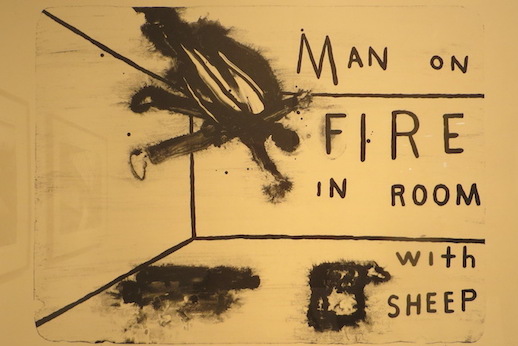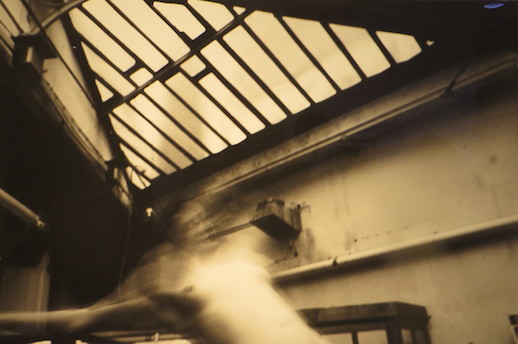In Heaven, Everything is Fine
David Lynch’s most recent major film work, Inland Empire (2006), may have been eight years ago, but that’s not to say he hasn’t been busy. As well as being heavily involved in the promotion of meditation through his own David Lynch Foundation, he directed a video for the rock group Nine Inch Nails in 2013, as well as releasing two studio albums of his own to critical acclaim. He even has his own line of coffee.
Alongside a multitude of other projects, Lynch has somehow also managed to continue his work as a visual artist. A total of 22 of his recent works are now on show at the Tomio Koyoma Gallery in Shibuya, following past exhibitions in Tokyo in 2012 and 2013. The exhibition is comprised of 17 lithographs, three woodcuts and two photographic prints, with more of his work to feature at a special exhibition, “Image-Makers”, at 21_21 DESIGN SIGHT starting later this month.
Lynch’s continued foray into the art world isn’t on a whim of course; he was primarily trained as a painter, before eventually turning to film and releasing his first full-length feature, Eraserhead, in 1977. Like his film work, Lynch’s art is a dark–often comic–portrayal of a world bordering on the fringes of reality. He himself has described his paintings as “organic, violent comedies.” Many of the pieces are unsettling, yet as a viewer you are sometimes unsure why. It’s this ‘otherworldliness’ that defines the body of his work.
Behind the camera, Lynch uses extended silences and slow, considered scripts to create a feeling of growing unease: everyday situations become warped, twisted and dreamlike. Audrey slowly dancing in the diner in Twin Peaks, for example, is exactly that–a girl simply dancing in a diner. But somehow it’s so much more: a portal into another world. His lithographs achieve the same thing. One, simply entitled Truck With Fish (2013), is a painting of just that–yet it manages to conjure up the same feeling of unease often felt when watching his films.


There’s no denying that some of Lynch’s cinematic creations are terrifying: The Mystery Man in Lost Highway (1997); the hobo in Mulholland Drive (2001); Dennis Hopper’s character, Frank Booth, in Blue Velvet (1986). His art is equally as haunting–taking inspiration from Francis Bacon, who Lynch praises as his favourite painter. Small Boat on Fire (2013) is a dark, swirling concoction of sea and flames, while New World (2014) depicts a screaming tortured soul, not dissimilar to the baby featured in Eraserhead. The mood that he creates through these recent paintings is a dark, bleak world–one that harbours a total rejection of light and colour.
The beauty of this exhibition is the strange, uneasy feeling of nostalgia that seeps from the pieces. Viewing the short photographic series, ‘NUDE ATELIER IDEM’ (2012), you can’t help but feel you’ve seen the pieces somewhere before, as if they are stills from some forgotten cinematic work. The style; the angles; the dreamlike narrative: it’s all unmistakably Lynch, and fans of his back catalogue will recognise key themes flowing throughout the exhibition. Fire, as always, is a prevalent theme – with one lithograph Man on Fire in Room with Sheep (2013) being both comic and brutal in equal measures.
In an interview from LA Times in 2012, Lynch claimed that he lacks the inspiration to start a new movie project, but if he got an idea he fell in love with, he’d “go back to work tomorrow.” This self-imposed hiatus behind the camera may leave an unfillable void in the cinematic world–but in turn rewards us with an ever-growing number of artistic pieces to enjoy. As the Lady in the Radiator from Eraserhead would sing, “in heaven, everything is fine.”



